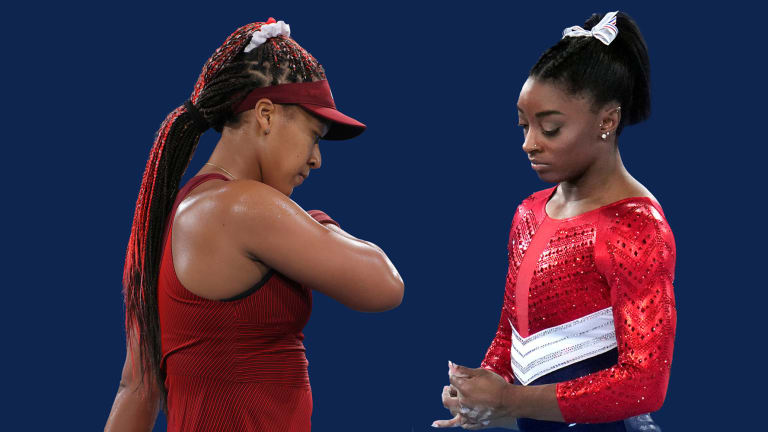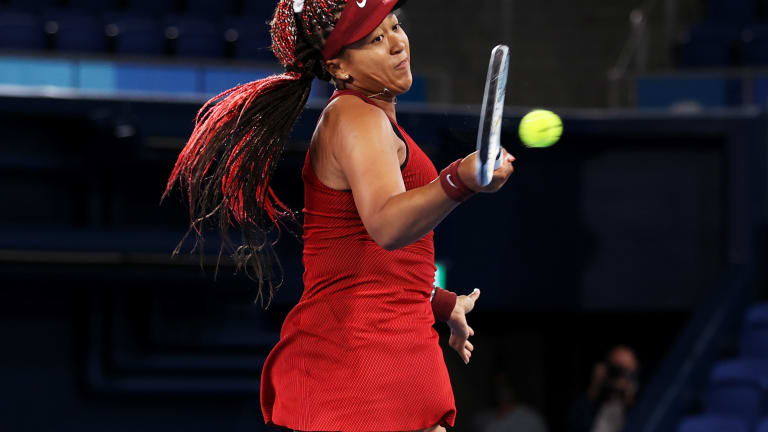“The twisties,” they call it in gymnastics. I’d never heard the term until Tuesday, but I got a pretty good idea of what it meant from seeing Simone Biles’ face as she tried to finish her first and only vault in Tokyo that evening. A few seconds before Biles came down, the camera caught her staring blankly off to the side—“lost” was how the NBC commentators accurately described her expression. When her feet hit the mat with a thud, she seemed surprised that it had happened so soon, as if she didn’t know exactly where she was in the air.
Biles’ face, and the loss of physical control she seemed to suffer during that vault, reminded me of what it’s like when tennis players are overcome by nerves, or the pressure of the moment, and suddenly can’t make their bodies do what they’ve done millions of times before. Any tennis player who has ever suffered from an extended case of the yips will recognize the terrible psychological spiral that sets in with the twisties, as described by Emily Giambalvo in the Washington Post today:
“After experiencing the twisties once,” she writes, “it’s very difficult to forget. Instinct gets replaced by thought. Thought quickly leads to worry. Worry is difficult to escape.”
There’s one big difference between the twisties and the yips, though—if you lose control of your body as a gymnast, you can seriously hurt yourself. Anyone who saw how lost Biles looked during her vault, and how hard she came down on the mat, should understand why she felt the need to withdraw from the team competition—and especially from her high-flying floor routine—on Tuesday.
“I just don't trust myself as much as I used to,” said Biles, whose performances in 2021 have come with more lapses and imperfections than they once did. “I’m a little bit more nervous when I do gymnastics. I feel like I’m also not having as much fun.”


